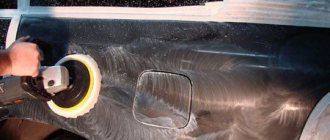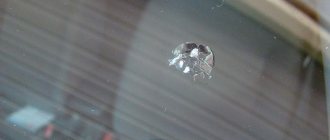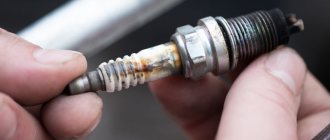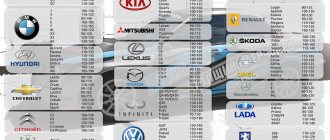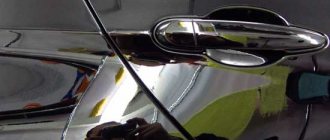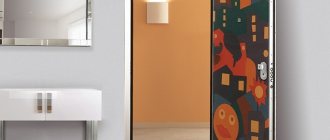Removing Oil Paint
There are many chemical removers on sale for removing oil paints (for example, Constant, Neomid, Dufa Abbeizer). They contain acetone, paraffin, and organic solvents. The effect of the removers is noticeable after 5-10 minutes: the coating softens, deforms, after which it is easy to remove with a spatula.
Material consumption can vary between 150 and 400 grams per square meter. The specific consumption rate is almost impossible to determine in advance, since it largely depends on the thickness of the paint layer. Based on the above, it is recommended to buy remover with a certain reserve.
Cleaning composition "Constant"
As an example of a remover, consider the composition from the Ukrainian-made “Constant” brand. "Constant" can be used to remove oil, pentaphthalic and glyphthalic paints, varnishes, drying oils from wooden and metal surfaces.
"Constant" contains organic-based solvents, disintegrants, and thickeners. Externally, the wash looks like a thick gray-white or brown-yellow suspension. The average consumption of the Constanta preparation is from 150 to 170 grams per layer.
Technical parameters of the cleaning composition:
- The share of non-volatile components is from 2 to 10%.
- The level of evaporation at a temperature of 20 degrees above zero is up to 6%.
- The time spent on washing off one layer is up to 20 minutes.
- Corrosive effect on metal - from 20 minutes.
Note! The drug should be stored in hermetically sealed packaging, away from direct sunlight or heating appliances.
The composition does not need to be diluted with a solvent, as it is already ready for use. However, the solution must be thoroughly shaken before use: it is important to ensure its homogeneity. If, even after shaking, separation remains (usually a consequence of storage at low temperatures), it is recommended to heat the jar in a water bath.
The wash is applied using a brush or roller at an air temperature of at least 10 degrees Celsius. After approximately 20 minutes, the paint material will begin to soften and peel off. If the layer is too thick and cannot be removed immediately, you can repeat the surface treatment with a remover.
After removing the coating, the surface should be wiped with a solvent, but not just any solvent, but from a highly volatile group. This is an important point because solvent residue can ruin the new finish.
If you are removing an oil paint stain from clothing, you should definitely wash it.
Folk remedies
If there is no time or money to purchase a cleaning agent, the oil coating can be washed off using the following time-tested folk methods:
- Mixtures of turpentine with ammonia. The solution is prepared in the following proportion: take 1 part of turpentine for 2 parts of ammonia. Apply the liquid with a brush, wait for an hour until the coating begins to swell. Remove it with a spatula, wash and dry the cleaned surface.
- A solution of quicklime (70%), potash (30%). Water is added in such a way as to obtain a viscous mixture. We apply the finished substance to the desired area, wait for at least 12 hours, after which we remove the paint and varnish with a spatula.
- A paste-like mixture of chalk and lime paste. We prepare the composition as follows: mix 5 kilograms of chalk with the same amount of lime paste. Add a little 20% caustic soda. Apply a 2 mm layer of the paste-like substance onto the material being processed. After 60-90 minutes, the paint layer will become pliable and can be removed mechanically.
How to remove spray paint from a car
In life you meet kind and different people. Those who can help and support (unfortunately there are few of them), as well as those who can cause trouble (those are the lucky ones). But not all troubles are actually as fatal and irreversible as it might seem at first glance. Therefore, if suddenly on a wonderful morning you discovered that some vandals (hooligans, monsters, KAZLES, etc.... depends on your feelings, vocabulary and imagination) have spray painted your car, you should not grab your heart and fall with a heart attack. There are ways to clean your car without damaging the paint and at great expense. The main thing is not to waste precious time, allowing the paint to dry and gain strength.
1 way. If the paint is fresh and can be pressed through with your fingernail, then you should try to wash it off with warm water and some detergent (dishwashing detergent, car shampoo, washing powder). A lot here depends on the composition of the paint in the can used by the vandal. There are compositions that are easily washed off with water, but there are those where water and soap cannot cope (What good cement is - it does not wash off at all). But we don’t give up.
Method 2. Chemical. We use a solvent (a degreaser will not work). The solvent should not be very aggressive so as not to damage the paintwork of your car (for example R-12). First, we try it on an inconspicuous place, wet a small area and observe if the varnish or paint is not damaged, does not dissolve or fade, then Hurray. We take a napkin, moisten it with a solvent and wash off the graffiti from the car, while trying to get by with as little aggressive liquid as possible. Immediately after this, remove all traces of solvent with warm water and car shampoo and preferably polish with wax polish. We safely remove it from the glass with a solvent. If the chemical method is unacceptable, then we move on to the third method.
3 way. Mechanical. Somewhat more labor-intensive, but no less effective. First, we try to erase the vandals’ art using paste to remove paint scratches, using a hard microporous napkin or rag (you can find them in hardware stores and in your wife’s kitchen). If the efficiency leaves much to be desired, then we arm ourselves with very fine sandpaper 2000, sand it, and pour water on it. Then we restore the gloss by polishing. After this the car is like new again. We treat the body with a wax coating. In the event of a repeated act of vandalism, the paint will wash off much more easily. Now you can go restore justice (within the right field).
If nothing helps or you are afraid to take risks, turn to professionals. If you have full insurance, it makes sense to contact your insurer.
Removing water-based paints
You can remove a layer of water-based paint at home in several simple ways, including:
- A combination of mechanical treatment with a brush with metal teeth and exposure to ordinary warm water. First, use a brush to leave deep scratches on the surface. Then we wet the roller in warm water and carefully treat the surface. We wait for 10-15 minutes until the paint swells and begins to peel off. Remove it with a metal scraper.
- Wallpaper glue. We take any sheet of paper, apply glue to it, and apply it to the paintwork. We wait until the glue dries. Then remove it using a spatula.
Basic methods for removing paint
Three main ways to get rid of old paint are widely known:
- Chemical;
- Mechanical;
- Thermal (we can say that this is a technical process used before mechanical processing of metal).
Most often, motorists, despite the high cost of work, choose the mechanical method. The technology for this method of metal cleaning is quite simple; this method is effective, but requires a lot of labor. The car is treated with a metal brush or sandpaper, or a drill or angle grinder can be used. The painted surface of the car is cleaned to a shine, and then washed and degreased before painting. Sometimes sandblasting is used, but when using it, you must remember to additionally sand the surface of the car, since grains of sand may remain in the upper layers of the metal.
The thermal method of removing paint from metal is that the paint-coated surface of the machine is heated using an industrial hair dryer, a blowtorch or a gas torch. After the paint has softened, it is cleaned off with special scrapers, brushes or other tools. This is a fairly simple and effective way to remove paint, but it is not very practical when needed. It is best suited for cleaning individual parts.
The chemical method of removing paint from a car involves cleaning the metal surface with caustic substances. When using them, you need to remember - the more layers of paint applied to the car, the more remover you will need. In addition, it is necessary to take into account vertical surfaces from which liquid flows, and this also does not contribute to saving material. It is worth saying that with the correct selection and proper use of reagents, this method is the simplest and most technologically advanced. Having softened the paint with the help, then removing it is not difficult.
Removing all types of paints
Removal products:
- Iodine solution. To do this, add 200 milliliters of iodine to a 10-liter container of water. Stir the solution well and apply it to the surface. After some time, cracks will appear.
- Soap solution. The recipe involves using regular laundry soap. Take a bar of soap, grate it, mix the resulting mass with water.
- A solution of ammonia. To make it you will need 250 milliliters of ammonia, 2 kilograms of chalk, and a liter of water. The solution turns out to be a porridge-like consistency. Apply the resulting mass to the surface. After a few hours, the old coating will begin to peel off.
- Dichloroethane and chloroform work well with latex coatings. Any of these components can be safely added to the solution.
- If the surface is painted with acrylic paints and varnish, you can add alcohol (vodka) or salicylic acid to it to improve the working qualities of the solution.
We clean the paint from the skin of the hands, face and eyebrows
Carrying out painting work without individual skin protection will certainly manifest itself in splashes of paint on the face and stains on the hands.
You need to deal with them carefully, using washes that are gentle in composition. How to remove paint from the skin of your hands or face?
A time-tested product that gently removes oil paint from the skin. You just need to wipe off traces of paint on your face and eyebrows with a cotton swab generously dipped in vegetable oil. If your hands are dirty, you can wash them by pouring the oil directly into your palm, rubbing thoroughly and rinsing with warm water and soap.
Designed to eliminate color defects in eyebrows and hair, but can also be used to combat other types of coloring compounds. They remove water-based paint, acrylic paint and small drops of oil paint well. Use according to instructions.
A fairly strong solvent, which is not recommended for cleansing facial skin. The skin on your hands is less sensitive, and paint stains on them can be wiped off by blotting the contaminated areas with cotton wool soaked in acetone. If the paint comes off poorly, you need to take a short break and repeat the procedure after 30-40 minutes, otherwise skin irritation, even burns, cannot be avoided.
Useful tips
It is recommended to adhere to the following rules:
- The wash must be suitable for its intended purpose. If the composition is intended for metal, using it on a wooden surface is not only ineffective, but also destructive to the material.
- Universal compositions are capable of removing all types of paint and varnish coatings, but their effectiveness is lower than that of specialized products aimed at specific types.
- It is hardly worth giving preference to overly active solutions. They are toxic and can sometimes damage the surface. Modern washes from well-known manufacturers have a milder effect, but at the same time they release fewer toxins.
- It is not recommended to mix different drugs with each other, as the consequences of this are unpredictable.
- The coating does not always peel off after the first treatment. If the material is covered in several layers, it will need to be processed several times.
- When working with chemicals, it is necessary to ensure good air circulation in the room - this will help remove toxins.
- If you have a choice, it is recommended to give preference to gel pastes. They are more expensive than liquids, however, due to the higher concentration of active components, their effectiveness is higher. In addition, it is more convenient to treat vertical surfaces with pastes, since the gel has low fluidity.
- If the remover contains paraffin (it acts as an evaporation inhibitor), the surface must be degreased. If this is not done, the proper level of adhesion will not arise between the new layer and the base.
The process of washing off paint at home does not require high qualifications and can be carried out by anyone. However, even such simple work is best carried out in strict accordance with the instructions while observing safety precautions.
Methods for identifying various types of household decorative and finishing plastic
Available methods for determining the type of plastic mass are as follows:
- Decoding the plastic markings on the back side of the product plate. Mainly used for imported window trim panels and plastic interior doors.
- Method of igniting the material: the nature of combustion also helps to determine the type of plastic.
- According to the density of the material, for which the part is immersed in water.
Let's consider these methods in more detail.
Marking
According to the international classification of plastic materials that are used in everyday life for the manufacture of window panels, door slopes, etc., all plastics have a certain digital designation. It is indicated in a triangle embossed on the back of the part. The international identification codes for the plastics used are as follows:
Plastic identification codes
- polyethylene terephthalate - PET, number in triangle 1;
- polyethylene, respectively low and high density - LDPE and HDPE, numbers in the triangle 4 or 2;
- polyvinyl chloride - PVC, number in triangle 3;
- polypropylene - PP, number in triangle 5;
- polystyrene – PS, number in triangle 6.
The manufacturer of a plastic element may, unfortunately, use a material not from the list above. Then the designation will contain the number 7, which will not tell us anything. In addition, small producers may generally ignore the requirements of the Plastics Processors Association, according to the ASTM D7611 standard of which the above marking is carried out. In such cases, you will have to use the second method from the recommended list.
Character of combustion
Plastics burn in different ways. The table below shows the characteristic differences and features of the process:
| Type of plastic material | Character of combustion | Emitted odor | Additional features |
| PET/RET | Burning with a flame with soot; if you remove material from the flame zone, combustion stops | Cutting | When burning it becomes soft |
| Polyethylene | Burns with a bright bluish flame, without soot formation | The smell is similar to the smell of melted paraffin | When burning, drips and drops form |
| Polypropylene | Burns with a bright bluish flame, no soot | A pungent odor similar to that of melted sealing wax or rubber | Elongated thread-like fragments often form from the melt |
| Polystyrene | Bright, smoky combustion that produces soot flakes | Sweetish | |
| PVC | Practically does not burn, smokes, self-extinguishes if removed from the flame zone | Distinct strong smell of chlorine | A zone of bluish-greenish color is visible in the flame |
| Polyamide | Burns, producing a blue flame | Smell of burning hair or feathers | Cracks and swells when burned |
| Polyurethane | When burned, it produces a smoky blue flame | Cutting | Drops of melt after cooling are sticky and greasy to the touch |
| ABC | Bright, smoky combustion that produces soot flakes | Cutting | |
| Fluoroplastic | Doesn't burn, just chars | Very sharp | |
| Polycarbonate | Burns poorly, self-extinguishes when removed from the flame zone | Sweetish, reminiscent of the smell of flowers |
